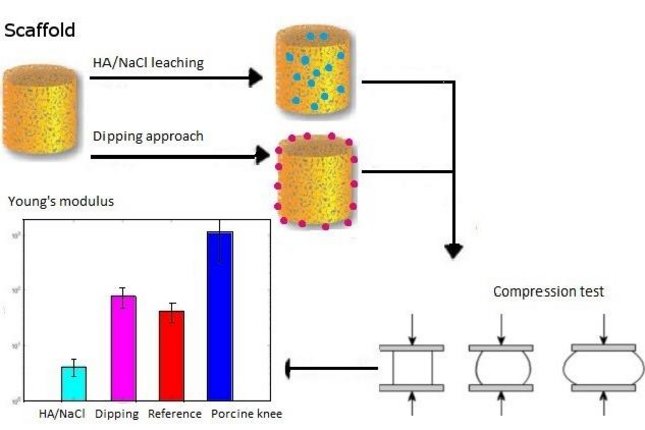
In the present study, silk fibroin scaffolds were developed from silkworm cocoons. These scaffolds have a compressive stiffness lower than native bone (silk E = 100kPa, bone E = 10MPa). A mineralization strategy, HA/NaCl leaching method, was explored to generate higher mechanical properties in the scaffolds and enhance the scaffolds for bone tissue engineering. A control mineralization, the dipping approach strategy, was executed which promotes HA crystal growth on the borders of the scaffold. The HA/NaCl leaching method incorporates pre-made HA minerals in the scaffolds at a weight percentage of 0.5w%, 1w% and 1.5w%. A compression test was performed to measure the mechanical properties of these mineralized scaffolds. The Young's modulus was calculated with the data provided by the compression test. It was compared to the Young's modulus of real trabecular bone tissue of porcine knees. The scaffolds with 0.5w% of the HA/NaCl mineralization showed a higher Young's modulus than the other samples within this mineralization (p = 0.0015). However the scaffolds had a lower Young’s modulus compared to the reference samples. For the scaffolds with the Dipping approach, the samples were compared but the result was not statistically significant (p = 0.475). The data suggests that the dipping approach results in scaffolds with a Young’s modulus closest to real bone, but a conclusion cannot be drawn due to no statistically significance (p = 0.087). Concluding, the HA/NaCl leached scaffolds did not result in better mechanical properties, data suggests that the dipping approach does but this is not statistically significant.